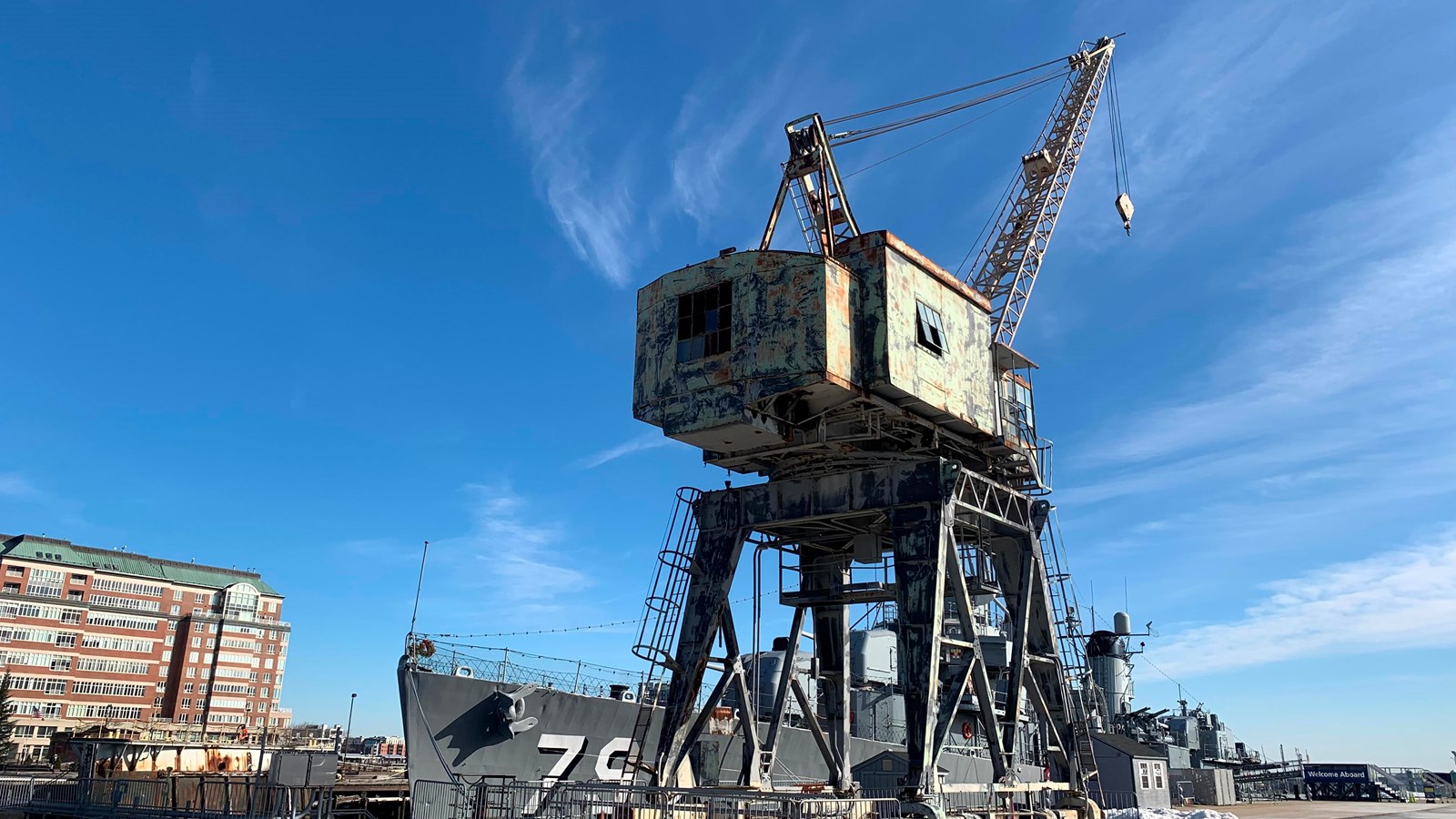Last updated: January 18, 2022
Place
Portal Crane

NPS Photo/Hornbeck
From underneath, it is easy to see why the two large cranes still found at the Charlestown Navy Yard—Crane 62 and Crane 65—are called "portal cranes." The open space, or portal, between the metal legs allowed workers and machines to move through the crane rather than having to go around. Conversely, operators could move the cranes along railroad tracks, driving them over blockages and repositioning them where needed.
The combination of its open portal, revolving top, and ability to move made the portal crane remarkably flexible and well-suited to its work at the Navy Yard. These cranes played a pivotal role in the building and repairing of ships at the Yard starting from their introduction in the 1940s until the Yard’s closure in 1974.
Leading up to and during World War, technological improvements and advancements in shipbuilding led to a reliance on electric motor cranes to fit together prefabricated sections of ships to form a complete vessel. Crane 62 and Crane 65 are good examples of the type of crane used during and after World War II for this style of construction.
After the war, the Charlestown Navy Yard found itself increasingly called upon not for new ship construction but for the refitting of older ships. Portal Cranes performed much of the conversion work of dozens of ships in the 1950s and 60s.
When the Yard closed in 1974, many of the cranes were scrapped or moved. However, since the Charlestown Navy Yard remained the home of USS CONSTITUTION, two portal cranes have remained alongside Dry Dock 1 to assist with maintaining the ship.
